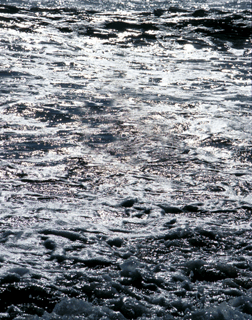ALBUQUERQUE, N.M. — The Department of Energy’s Sandia National Laboratories and the Bureau of Reclamation today announced the release of a research road map to guide future investments necessary to reduce the cost of water desalination.
The report, compiled by a panel of experts, also discusses related advanced water treatment technologies and enhanced use of desalination.
The road map defines a research and development path for desalination technologies, beginning today and continuing through the year 2020 that, if implemented, would support finding solutions to the nation’s water supply-related needs by advancing water desalination technologies.
Desalination technologies could change the way the nation manages and uses water by providing new processes to cost-effectively and efficiently remove salts and other contaminants from impaired waters.
“Cost reduction is the single most important factor necessary to increase the implementation of desalination, which will in turn reduce pressure on our limited fresh water supplies,” said John Keys, Commissioner of the Bureau of Reclamation.
“As we enter the fourth year of a drought in many western states, it is imperative that we develop new technologies to increase our domestic water supply,” Keys said. “This innovative report is a step in the right direction.”
The report is expected to be used to guide decision making by Congress, federal agencies, utilities, and research institutions and individuals funding or conducting desalination research.
The Bureau of Reclamation is asking the National Academy of Sciences National Research Council (NRC) to review the report to address whether the roadmap presents an appropriate and effective course to help address future freshwater needs in the United States. The NRC also is being asked to identify general priorities for research investments. A final report of the road map committee will be issued that incorporates the comments from the NRC and other national desalination experts.
Development of the Desalination Roadmap began with a clear discussion among members of an expert committee of major national-level water supply needs over the next several decades and included several case studies drawn from across the nation. The Bureau of Reclamation and Sandia National Laboratories established the Executive Committee.
The Committee included representatives of the private sector, municipal water agencies, academic and other research institutions, and the federal government representing the breadth of desalination issues.
Members include William Blomquist, Indiana University; Shannon Cunniff, Bureau of Reclamation; Peter Fox, Arizona State University; David Furukawa, Separation Consultants, Inc.; Marie Garcia, Sandia National Laboratories; Michael Gritzuk, Phoenix Water Services Department; Lisa Henthorne, Aqua Resources International; Anita Highsmith, Highsmith Environmental Consultants; Thomas Hinkebein, Sandia National Laboratories; Thomas Jennings, Bureau of Reclamation; Conrad Mulligan, McNeil Technologies; Kevin Price, Bureau of Reclamation; and Gary Wolff, Pacific Institute.
The report is available at http://www.sandia.gov/water/docs/RoadmapV21.pdf or by calling Kevin Price, Manager, Water Technology, Engineering and Research Group, Bureau of Reclamation, at (303) 445-2260, or Tom Hinkebein, Desalination Research Roadmap Program Manager, Sandia National Laboratories, at (505) 844-6985.
Feedback on the report will be shared with the committee established by the National Research Council to undertake its review.
Reclamation is the largest wholesale water supplier and the second largest producer of hydroelectric power in the United States, with operations and facilities in the 17 Western States. Its facilities also provide substantial flood control, recreation, and fish and wildlife benefits.
Bureau of Reclamation media contact: Kevin Price, kprice@do.usbr.gov, (303) 445-2260
